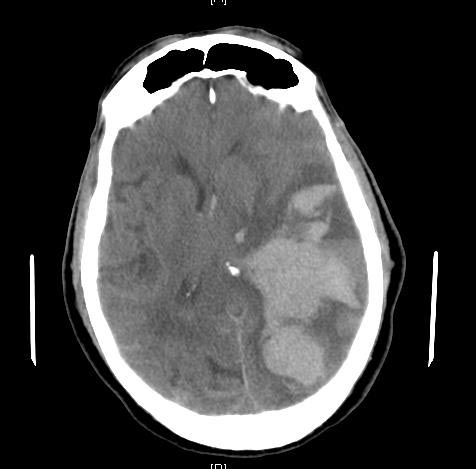
In patients with active or impending herniation and deterioration, 23.4% Normal Saline has been shown to be beneficial. It can only be administered through a central line. The current recommended dose is 30mL which must be given slowly over 10-30 minutes while patient is actively hyperventilated w/ rate >40 and the physician looks for signs of improvement clinically such as reversal of pupillary dilatation and/or reactivity. It is important to note that this treatment is currently commonly restricted to neurocritical care floors given the need for monitoring and severe side effects. However, in conjunction with the neurosurgery and neurocritical care team may provide life/brain sparing time and effects in the appropriate patient setting in the Emergency Department.
Suarez JI, Qureshi AI, Bhardwaj A, et al. Treatment of refractory intracranial hypertension with 23.4% saline. Critical Care Medicine 1998;26:1118-1122.
Qureshi AI, Suarez JI, Bhardwaj A, et al. Use of hypertonic (3%) saline/acetate infusion in the treatment of cerebral edema; Effect on intracranial pressure and lateral displacement of the brain. Critical Care Medicine 1998;26:440-446.
Qureshi AI & Suarez JI. Use of hypertonic saline solutions in treatment of cerebral edema and intracranial hypertension. Review. Critical Care Medicine 2000;28:3301-3313.
Bhardwaj A, Ulatowski JA. Cerebral edema: Hypertonic saline solutions. Current Treatment Options in Neurology 1999; 1:179-87.
Khanna S, Davis D, Peterson B et al. Use of hypertonic saline in the treatment of severe refractory posttraumatic intracranial hypertension in pediatric traumatic brain injury. Critical Care Medicine 2000;28:1144-1151.
